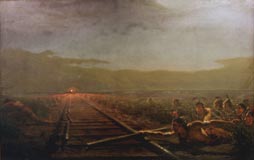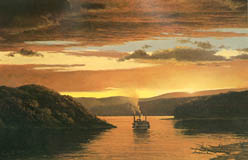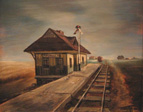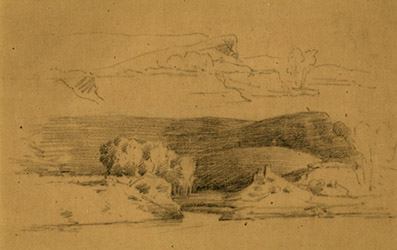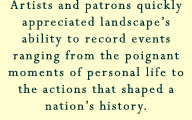
In the early days of the European art academies, landscape painting was considered a lesser genre, or type, of art, because it did not deal with the human being as a subject, and so landscapes most often occurred as a background setting for historical scenes. By the nineteenth century, artists were reveling in the beauty of the natural landscape for its own sake.
In America, European artists brought these attitudes about the value and use of landscape to the young nation. Early artist/explorers documented events that would shape the nation, while later in the 19th century the concept of narrative-laden landscape painting would become a tool for Manifest Destiny and the validation of westward expansion. Today, artists continue to incorporate history into landscape, sometimes commemorating important moments of personal history, at other times romantically evoking the recent past and even presenting new visual interpretations of pivotal events that shaped our nation’s development.
These images, whatever their date, speak to us not only of the changing notions of artistic style and the capricious nature of historical memory, but also of landscape’s ability to represent our lives. As Ralph Waldo Emerson phrased it; “Visible distance behind and before us, is respectively our image of memory and hope.” [Nature; Addresses and Lectures, 1849]
